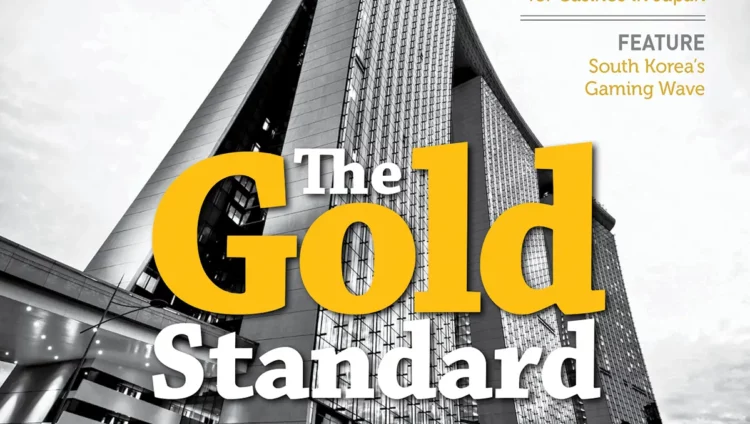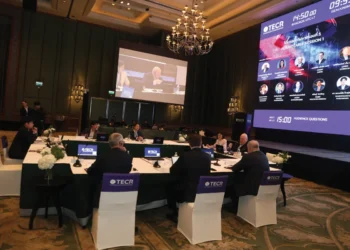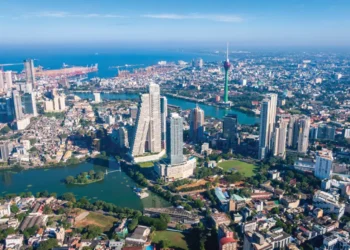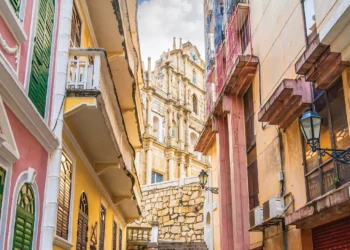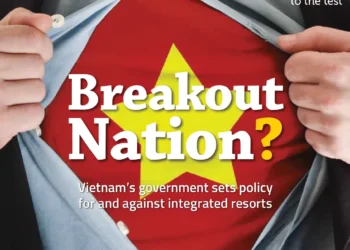In this regular feature in IAG to celebrate 19 years covering the Asian gaming and leisure industry, we look back at our cover story from exactly 10 years ago, “Singapore’s super model”, to rediscover what was making the news in February 2015!
Thai authorities have made no secret of the fact that the push to legalize casino gaming is driven by a desire to emulate the enormous success of Singapore’s integrated resorts. But they are far from first to the party in that regard.
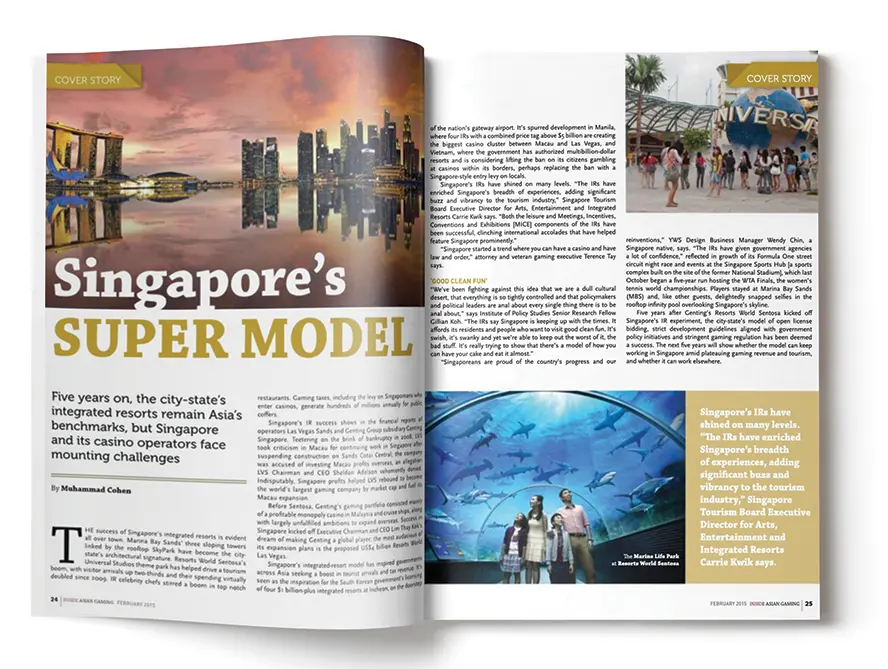 A decade ago this month, IAG celebrated the five-year anniversary of the Singapore IR openings with a deep dive cover story titled “Singapore’s super model” in which we noted that, even in those early days, jurisdictions across Asia were already trying to copy Singapore’s playbook.
A decade ago this month, IAG celebrated the five-year anniversary of the Singapore IR openings with a deep dive cover story titled “Singapore’s super model” in which we noted that, even in those early days, jurisdictions across Asia were already trying to copy Singapore’s playbook.
“Singapore’s integrated-resort model has inspired governments across Asia seeking a boost in tourist arrivals and tax revenue,” we wrote at the time.
“It’s seen as the inspiration for the South Korean government’s licensing of four US$1 billion-plus integrated resorts at Incheon, on the doorstep of the nation’s gateway airport. It’s spurred development in Manila, where four IRs with a combined price tag above US$5 billion are creating the biggest casino cluster between Macau and Las Vegas, and Vietnam, where the government has authorized multibillion-dollar resorts and is considering lifting the ban on its citizens gambling at casinos within its borders, perhaps replacing the ban with a Singapore-style entry levy on locals.”
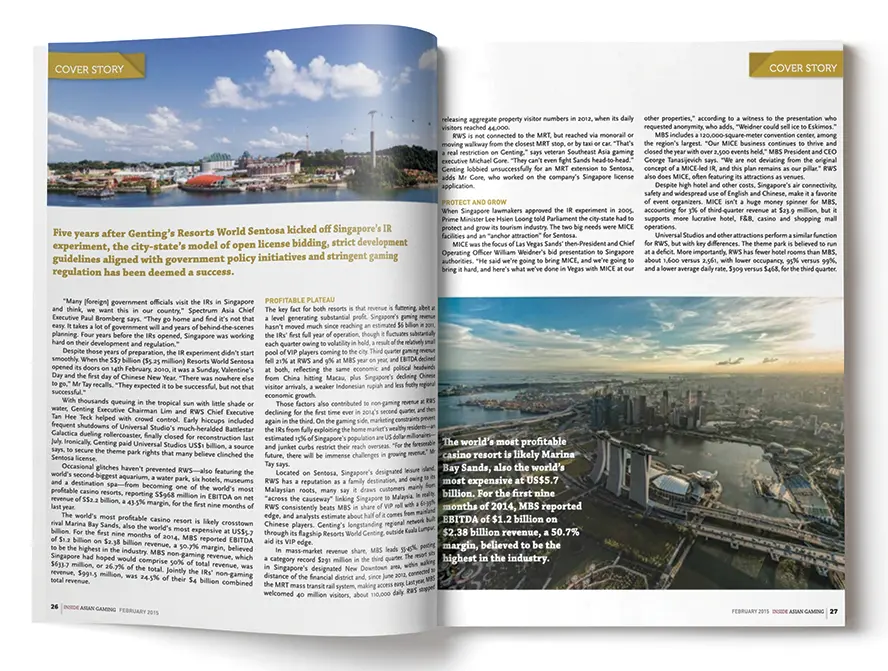 Spectrum Asia’s Paul Bromberg told IAG in 2015: “Many [foreign] government officials visit the IRs in Singapore and think ‘We want this in our country’ [although] they go home and find it’s not that easy. It takes a lot of government will and years of behind-the-scenes planning. Four years before the IRs opened, Singapore was working hard on their development and regulation.”
Spectrum Asia’s Paul Bromberg told IAG in 2015: “Many [foreign] government officials visit the IRs in Singapore and think ‘We want this in our country’ [although] they go home and find it’s not that easy. It takes a lot of government will and years of behind-the-scenes planning. Four years before the IRs opened, Singapore was working hard on their development and regulation.”
Nevertheless, it was Singapore, noted veteran gaming executive Terence Tay, that “started a trend where you can have a casino and have law and order [too].”
The big question back in 2015 was of course whether Singapore’s IRs could maintain their early momentum, and whether those jurisdictions looking to emulate their unique model would also work.
On the latter, the jury is out: the foreigner-only models employed in South Korea and Vietnam are limiting to say the least, while it would be ambitious to describe the Philippines’ regulatory regime as being as rigorous as Singapore’s. Perhaps the UAE, which recently issued its first casino license to Wynn Resorts, looms as the most likely to offer something similar.
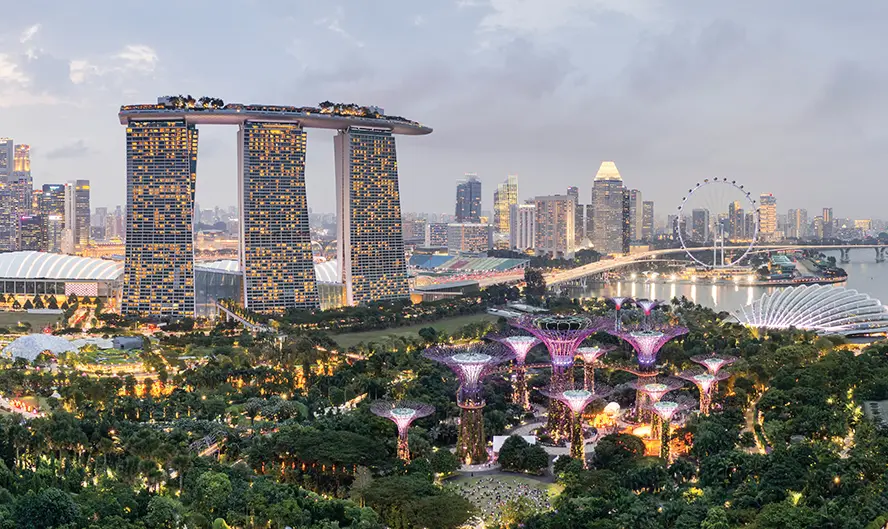 But when it comes to momentum, there is no doubting the fact that Singapore continues to produce results for government and operators alike. In fact, the biggest challenge for Marina Bay Sands and Resorts World Sentosa has been capacity constraints, which is why they are investing a combined US$13 billion on massive expansion projects that will add new hotel inventory, gaming space and even more non-gaming attractions.
But when it comes to momentum, there is no doubting the fact that Singapore continues to produce results for government and operators alike. In fact, the biggest challenge for Marina Bay Sands and Resorts World Sentosa has been capacity constraints, which is why they are investing a combined US$13 billion on massive expansion projects that will add new hotel inventory, gaming space and even more non-gaming attractions.
MBS, long-touted as the most profitable casino in the world, will invest US$8 billion alone into its expansion project, including the addition of a fourth hotel tower to its existing iconic façade. That’s not exactly pocket change, but with forecasts of US$3 billion in annual EBITDA, it seems the Singapore investment will again be money well spent.






